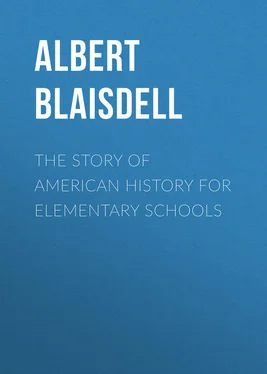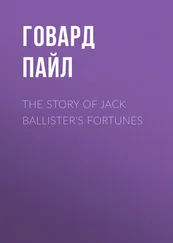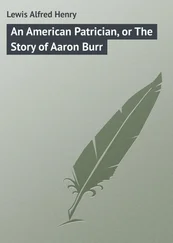Albert Blaisdell - The Story of American History for Elementary Schools
Здесь есть возможность читать онлайн «Albert Blaisdell - The Story of American History for Elementary Schools» — ознакомительный отрывок электронной книги совершенно бесплатно, а после прочтения отрывка купить полную версию. В некоторых случаях можно слушать аудио, скачать через торрент в формате fb2 и присутствует краткое содержание. ISBN: , Жанр: foreign_antique, foreign_prose, Историческая проза, на английском языке. Описание произведения, (предисловие) а так же отзывы посетителей доступны на портале библиотеки ЛибКат.
- Название:The Story of American History for Elementary Schools
- Автор:
- Жанр:
- Год:неизвестен
- ISBN:http://www.gutenberg.org/ebooks/34600
- Рейтинг книги:5 / 5. Голосов: 1
-
Избранное:Добавить в избранное
- Отзывы:
-
Ваша оценка:
- 100
- 1
- 2
- 3
- 4
- 5
The Story of American History for Elementary Schools: краткое содержание, описание и аннотация
Предлагаем к чтению аннотацию, описание, краткое содержание или предисловие (зависит от того, что написал сам автор книги «The Story of American History for Elementary Schools»). Если вы не нашли необходимую информацию о книге — напишите в комментариях, мы постараемся отыскать её.
The Story of American History for Elementary Schools — читать онлайн ознакомительный отрывок
Ниже представлен текст книги, разбитый по страницам. Система сохранения места последней прочитанной страницы, позволяет с удобством читать онлайн бесплатно книгу «The Story of American History for Elementary Schools», без необходимости каждый раз заново искать на чём Вы остановились. Поставьте закладку, и сможете в любой момент перейти на страницу, на которой закончили чтение.
Интервал:
Закладка:
80. How the Indians buried their Dead.– For the most part the Indians buried their dead in mounds or in shallow graves, sometimes prostrate, but often in a sitting posture facing the east. But some tribes placed the body on a high scaffold raised on long poles out of the reach of wild beasts. Beside the body were carefully placed the weapons of the dead, paints, any favorite trinkets he used to wear, and food to sustain him on his journey to the far-off Happy Hunting Grounds.
CHAPTER VII.
THE DUTCH IN NEW YORK; THE QUAKERS IN PENNSYLVANIA
81. The Search for a Shorter Route to India.– We must not forget that during all these years the European nations in their desire for riches were often searching for a shorter route to China and the East Indies. They hoped to succeed in this either by sailing to the north of Europe or America, or by finding some opening across the newly discovered continent. For more than a hundred years after the time of Columbus many a daring navigator came forward to undertake this business.
82. Sir Henry Hudson, the Bold and Skillful Mariner.– Several years before the Pilgrims landed at Plymouth, a bold and skillful mariner named Henry Hudson, a friend of Captain John Smith, was hired by some London merchants to search for the imaginary northern passage. For this purpose he made two perilous voyages. Once he sailed along the eastern coast of Greenland until the ice stopped him. After three months he returned to England. The next year he tried it again, and sailed farther north, but as before was turned back by the ice.
Hudson tells us that on one of these voyages two of his sailors saw a mermaid swimming close to the ship's side. The upper parts of her body were those of a woman, but below she was a fish, and as big as a halibut! Probably the creature was a seal, an animal with which English sailors were not at that time familiar.
83. Hudson enters the Dutch Service.– At last, in 1609, Hudson, who had now become famous, entered the service of the Dutch East India Company and sailed from Amsterdam to find the long-sought route. Living near the ocean, the Dutch at this time were great sailors and traders. They owned more ships than all Europe besides. Their sails whitened every ocean. They were glad to hire "the bold Englishman, the expert pilot, and the famous navigator," as they called Hudson, to brave the perils of the Arctic seas.
Again this intrepid sailor, "the Nansen of the year 1608," went too far north, and again he found himself caught in the ice of the desolate Arctic regions. He now made up his mind to go farther west. He coasted along Greenland, passed southward to Newfoundland, sighted Cape Cod, and then sailed as far south as Virginia. Finding the English settlers there ahead of him, he turned about and steered north again, keeping close to the wild and unknown coast.
84. Hudson sails up the Hudson River in the Little "Half Moon."– In September, 1609, Sir Henry found himself not far from the mouth of a broad river, and dropped anchor near what is now Sandy Hook. The Indians here were kind to their strange visitors, and came on board the vessel to trade. They brought grapes, furs, and pumpkins, and traded them for beads, knives, and hatchets.
After a few days the anchor of the little "Half Moon" was raised, the sails were spread, and Hudson was slowly wafted past the Palisades and far up the noble river which still bears his name. Because for many miles the water at high tide was salt, he thought that he had surely found the long-wished-for passage to India.
No white man had ever before sailed up this, perhaps the most beautiful of American streams. With what wonder and hope must the captain and his men have gazed on the lovely scenery, rich in the gorgeous hues of autumnal foliage! In fact Hudson, in the story of his voyage, says that the lands on both sides were "pleasant with grass and flowers and goodly trees, – as beautiful a land as one can tread upon."
85. Kindly received by the Indians.– The Indians, filled with curiosity, flocked from far and near to the banks of the river to see the "great white bird," a name they gave the "Half Moon" on account of its white spreading canvas wings. As they peeped out from the rocks and woods along the shore, they had the same feelings of curiosity and awe as did the natives that gazed in wonder upon the vessels of Columbus more than a hundred years before.
Hudson sailed north until he reached a point near where Albany now stands. As the river now became narrower and its water fresh, he was convinced at last that he could never find his way to India by this route.
86. Hudson returns Home; his Sad Fate.– After a time, disappointed at his failure to reach India, Hudson sailed out of the river and across the ocean to England, and afterwards to Holland. The stout-hearted mariner never saw his "great river" again. On his next and last voyage he sailed farther north and entered the immense land-locked bay that now bears his name. He thought that he had this time surely discovered the long-sought opening to the Pacific. Imagine his dismay when, after coasting around its sides for nearly three months, he was forced at last to believe that this inland sea had no western outlet!
The long Arctic winter came. Hudson's men were nearly starved. They had endured so many hardships that in a frenzy of despair and wrath they at last bound their captain hand and foot, thrust him on board a small boat with his son and some sick sailors, and set them adrift. This was the last ever seen or heard of Hudson.
Probably, like De Soto, the bold navigator found his grave in the vast waters that he was the first to discover.
87. The Dutch claim the Territory; Manhattan Island bought of the Indians.– The Dutch now laid claim to all the territory along the Hudson River, and in 1614 they took possession of it under the name of New Netherland. In a few years they began to establish trading posts, where they might buy of the Indians the skins of bears, beavers, and otters.
After a time the Indians sold the Dutch the island of Manhattan for the sum of twenty-four dollars. This settlement, then called "New Amsterdam," was the beginning of what is now one of the largest and richest cities in the world – Greater New York.
88. The Dutch Settlers prosper.– For the first few years the settlers in New Amsterdam were poor; but after a time richer and more influential men made homes for themselves in this colony. They secured from the Dutch East India Company the right to own by purchase from the Indians a tract of land sixteen miles in length and extending an unlimited distance into the interior, and to establish there a colony of fifty people. The rich landholders were called "patroons," and their great estates laid the foundation of the wealth of many of the leading families of the Empire State.
89. How the Dutch People lived.– As the Dutch prospered, they built better houses. These were of wood. Each house had on its roof one weathercock, and often many of them. The gable ends were built of various-colored bricks brought over from Holland.
The Dutch women were excellent housekeepers. We owe to them the doughnut, the cruller, cookies, and many other delicious articles of skillful cookery. Many a pleasant custom had its origin with these genial Dutch settlers, such as the Christmas visit of Santa Claus, the display of colored eggs at Easter, and the friendly visiting on New Year's day. The floors in these thrifty homes were covered with white sand, on which quaint figures were sketched with a broom. There were huge fireplaces with Dutch tiles of different colors, on which were represented scenes from the Bible. The Dutch men were fond of good food and of their pipes. They used to have in front of their houses a porch or "stoop," sometimes called a "bowerie," on which they could sit and smoke and tell stories and take their ease generally. The men wore several pairs of knee breeches at once, one over another, with long stockings, and with huge buckles at the knees and on the shoes. Their coats, too, were adorned with great buckles of silver or brass.
Читать дальшеИнтервал:
Закладка:
Похожие книги на «The Story of American History for Elementary Schools»
Представляем Вашему вниманию похожие книги на «The Story of American History for Elementary Schools» списком для выбора. Мы отобрали схожую по названию и смыслу литературу в надежде предоставить читателям больше вариантов отыскать новые, интересные, ещё непрочитанные произведения.
Обсуждение, отзывы о книге «The Story of American History for Elementary Schools» и просто собственные мнения читателей. Оставьте ваши комментарии, напишите, что Вы думаете о произведении, его смысле или главных героях. Укажите что конкретно понравилось, а что нет, и почему Вы так считаете.












